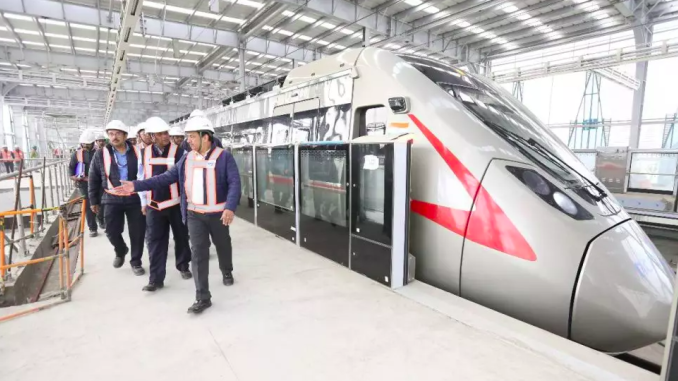
A team of officials from Indian Railways led by Shri Roop Narayan Sunkar, Member Infrastructure, Ministry of Railways, Railway Board, visited some of the key sites of Delhi-Ghaziabad-Meerut RRTS corridor.
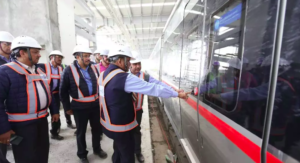
More Details:
- A team of officials from Indian Railways led by Shri Roop Narayan Sunkar, Member Infrastructure, Ministry of Railways, Railway Board, visited some of the key sites of Delhi-Ghaziabad-Meerut RRTS corridor including Track slab factory in Meerut, Bhaisali RRTS Station, Duhai Depot and Sahibabad RRTS Station.
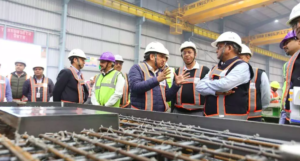
- Team NCRTC, led by MD Shri Vinay Kumar Singh, gave them an overview of the various construction activities being carried out on the corridor, installation of several systems and sub-systems, latest technologies being adopted for implementation and operations of this transformative mobility solution, and preparations underway for the trial runs.
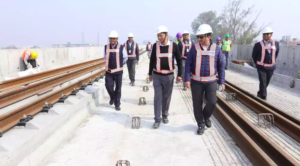
About Delhi-Meerut RRTS Corridor:
- The Delhi-Meerut RRTS corridor is approximately 82 km long corridor with 25 stations, which will cover the distance from Sarai Kale Khan in Delhi to Modipuram in Meerut in about 60 minutes (Currently, it takes around 3 hours to commute from Delhi to Meerut).
- The total project completion cost of Delhi-Ghaziabad-Meerut RRTS corridor is about INR 30274 Crore.

- RRTS is a rail based high-speed transit system with a design speed of 180 kmph and an average speed of 100 kmph.
- Once operational, it will be the fastest, most comfortable and safest mode of commuter transport in NCR.
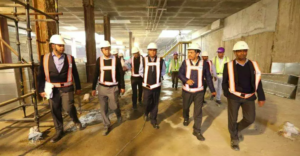
About NCRTC:
- National Capital Region Transport Corporation (NCRTC) is a Joint Venture of Government of India and State Governments of Delhi, Haryana, Rajasthan & Uttar Pradesh and is mandated for designing, developing, implementing, financing, operating and maintaining Regional Rapid Transit System (RRTS) projects in the National Capital Region (NCR) to provide comfortable and fast transit to NCR towns and meet the high growth in transport demand.
Source: NCRTC- Press Release | Images Credit: NCRTC

